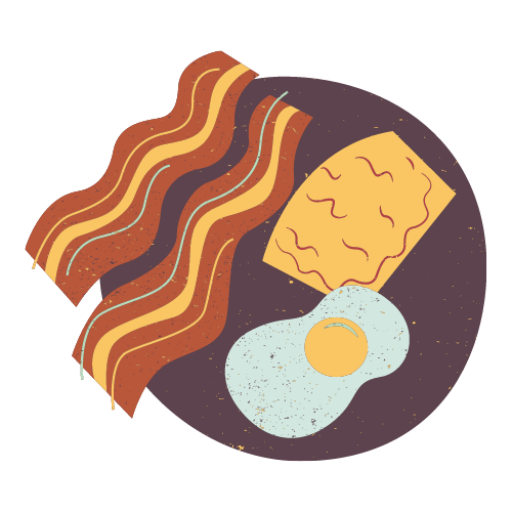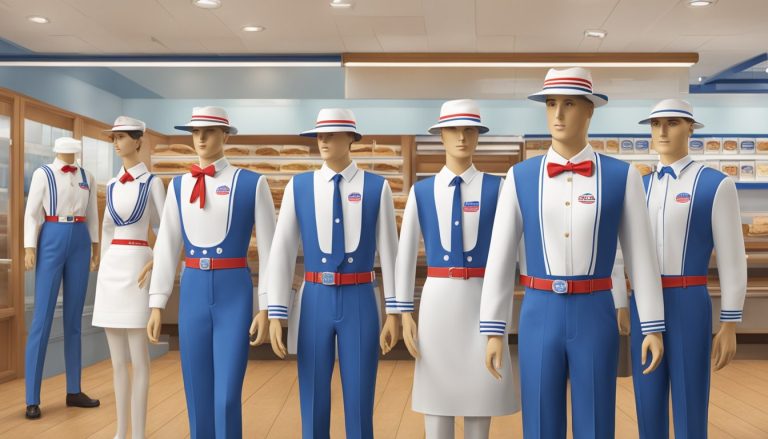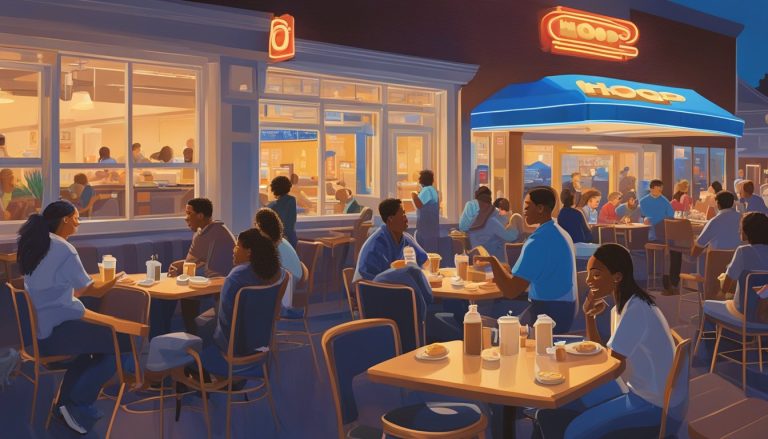IHOP, the beloved pancake house, has flipped its social media strategy as deftly as it flips flapjacks. In recent years, the restaurant chain has embraced digital platforms to connect with customers and reinvent its brand image. IHOP’s social media approach combines clever marketing campaigns, interactive content, and a dash of playful humor to engage audiences and drive brand awareness.

The restaurant’s most notable digital endeavor was the temporary rebranding to “IHOb” in 2018. This move sparked widespread conversation online, as people speculated about the meaning behind the name change. IHOP leveraged this curiosity to promote its new burger menu, demonstrating the power of social media to generate buzz and increase foot traffic.
Beyond headline-grabbing stunts, IHOP maintains an active presence across various social platforms. The company shares mouthwatering food photos, responds to customer feedback, and creates shareable content that resonates with its target audience. By adapting to the digital age, IHOP has transformed from a traditional diner into a modern brand that serves up engaging online experiences alongside its signature pancakes.
IHOP’s Brand Evolution
IHOP has undergone significant transformations since its inception, adapting to changing consumer preferences and market trends. The brand’s journey includes a notable name change and menu expansions beyond its pancake roots.
History of International House of Pancakes
International House of Pancakes opened its first restaurant in Toluca Lake, California in 1958. The chain quickly gained popularity for its signature pancakes and breakfast offerings.
By the 1960s, IHOP had expanded across the United States through franchising. The company adopted the acronym “IHOP” in 1973, which became its widely recognized brand name.
IHOP’s menu gradually evolved to include lunch and dinner options, catering to a broader customer base. The chain introduced its iconic blue roof design in the 1970s, creating a distinctive visual identity.
In 2007, IHOP acquired Applebee’s, forming DineEquity (now Dine Brands Global), which expanded its presence in the casual dining sector.
Rebranding to IHOb and Its Impact
In June 2018, IHOP temporarily changed its name to “IHOb” – International House of Burgers. This bold marketing move aimed to promote the chain’s new line of burgers and highlight its non-breakfast menu items.
The rebranding generated extensive media coverage and social media buzz. IHOP’s Twitter followers increased by 400% during the campaign, while its burger sales quadrupled.
Despite initial skepticism, the IHOb campaign successfully raised awareness of IHOP’s broader menu offerings. It demonstrated the brand’s ability to adapt and stay relevant in a competitive market.
After a month, IHOP reverted to its original name, having achieved its goal of increased publicity and burger sales. The campaign showcased IHOP’s willingness to take risks and engage with customers in innovative ways.
Analyzing IHOP’s Social Media Presence
IHOP has cultivated a strong digital presence across major social platforms. Their strategy focuses on engaging customers, building brand awareness, and driving traffic to restaurants through targeted campaigns and creative content.
Social Media Platforms and Use Cases
IHOP maintains active profiles on Facebook, Twitter, and Instagram. Each platform serves distinct purposes in their marketing mix. Facebook hosts IHOP’s largest audience, with over 3 million followers. The company uses it to share promotional offers, menu updates, and user-generated content.
Instagram showcases visually appealing food photography and behind-the-scenes glimpses of IHOP restaurants. This platform helps build brand affinity among younger demographics.
Twitter acts as IHOP’s real-time engagement hub. The brand responds to customer inquiries, participates in trending conversations, and launches viral marketing campaigns on this platform.
Leveraging Twitter for Brand Engagement
IHOP’s Twitter strategy centers on witty, conversational content that sparks user interaction. The brand frequently posts polls, asks questions, and encourages followers to share their IHOP experiences.
A standout example is the 2018 IHOb campaign. IHOP temporarily changed its name to IHOb, generating massive buzz and speculation. The stunt led to #IHOb becoming a trending topic, with over 150,000 mentions.
IHOP also uses Twitter to amplify promotional events like their anniversary pancake special. These campaigns significantly boost brand visibility and drive in-store traffic.
Developing a Strong Social Media Marketing Strategy
IHOP has leveraged social media to boost brand awareness and engage customers. The company’s approach combines shareable content with creative campaigns to stand out in the digital landscape.
Creating Shareable Content
IHOP focuses on producing visually appealing content that resonates with its audience. The brand often shares mouthwatering images of pancakes, burgers, and other menu items. These posts encourage users to like, comment, and share.
IHOP also uses Instagram Stories and digital stickers to increase engagement. By featuring limited-time offers and seasonal specials, they create a sense of urgency and excitement among followers.
User-generated content plays a key role in IHOP’s strategy. The company encourages customers to share photos of their meals, often reposting the best submissions. This approach builds community and authenticity.
Humor and Creativity in Campaigns
IHOP’s social media campaigns often incorporate humor and unexpected elements. The company’s temporary rebranding to “IHOb” to promote its burgers generated significant buzz and media coverage.
Creative stunts, like the April Fool’s Day Bacon Dispenser campaign, showcase IHOP’s playful side. These initiatives spark conversations and keep the brand fresh in consumers’ minds.
IHOP also leverages trending topics and pop culture references. The recent Wonka-themed menu demonstrates the brand’s ability to tap into current events and create shareable moments.
By balancing product promotion with entertaining content, IHOP maintains an engaging social media presence that appeals to a broad audience.
IHOP’s Marketing Campaigns and Customer Outreach
IHOP has implemented diverse marketing strategies to expand its appeal beyond breakfast and boost sales across all dayparts. The company has focused on innovative promotions and menu expansions to attract customers throughout the day.
Innovative Breakfast Combos Promotion
IHOP introduced creative breakfast combo deals to reinvigorate its core morning offerings. These promotions featured unique pairings of classic pancakes with new savory items. The company leveraged social media platforms to showcase visually appealing images of these combos, generating buzz among customers.
Digital marketing initiatives included targeted ads and influencer partnerships to reach younger demographics. IHOP created Instagram-worthy breakfast presentations, encouraging customers to share their meals online. This user-generated content strategy helped increase brand visibility and engagement.
The breakfast combos promotion successfully drove foot traffic during morning hours and revitalized IHOP’s image as a breakfast destination.
Lunch and Dinner Menus Expansion
IHOP made a bold move to rebrand as IHOb (International House of Burgers) in 2018, aiming to highlight its expanded lunch and dinner options. This temporary name change generated significant media attention and social media buzz.
The campaign centered around the launch of the Ultimate Steakburger line, featuring high-quality beef patties and gourmet toppings. IHOP used various advertising tactics, including TV commercials and digital ads, to promote its new burger offerings.
While the IHOb campaign received mixed reactions, it successfully increased awareness of IHOP’s non-breakfast menu items. The company reported a notable uptick in burger sales following the promotion, demonstrating its effectiveness in diversifying IHOP’s image beyond pancakes.
The Role of Influencers and Word of Mouth in IHOP’s Strategy
IHOP leverages influencers and word-of-mouth marketing to amplify its brand message and engage customers. The restaurant chain employs creative tactics to spark conversations and encourage brand sharing both online and offline.
Collaborating with Social Misfits and Offline Influencers
IHOP partners with unconventional influencers to create buzz around its campaigns. These “social misfits” often have unique perspectives that resonate with diverse audiences. The brand also taps into offline influencers, such as local community leaders and food bloggers.
IHOP’s influencer strategy extends beyond traditional social media personalities. They collaborate with chefs, comedians, and even pancake artists to showcase their menu items in creative ways. This approach helps IHOP reach different demographics and maintain relevance in a crowded market.
By working with a mix of online and offline influencers, IHOP ensures its message spreads across various channels. This multi-faceted approach helps the brand stay top-of-mind for consumers when choosing a dining destination.
Encouraging Consumer Conversation and Brand Sharing
IHOP recognizes the power of organic, customer-driven conversations. The brand designs campaigns that prompt discussions and incentivize sharing. For example, their loyalty program rewards customers for referring friends and family.
In-restaurant experiences are crafted to be shareable moments. Instagrammable dishes and themed decor encourage diners to post about their visits. IHOP also hosts events and promotions that give customers a reason to talk about the brand.
User-generated content plays a crucial role in IHOP’s strategy. The company frequently reposts customer photos and testimonials, fostering a sense of community. This approach not only provides authentic content but also makes customers feel valued and heard.
Evaluating the Success of IHOP’s Social Media Tactics
IHOP’s social media campaigns have generated significant buzz and engagement. The restaurant chain has leveraged digital platforms to boost brand awareness and drive sales growth.
Measuring Same-Store Sales and Marketing Impact
IHOP saw a notable increase in same-store sales following major social media initiatives. The 2018 IHOb campaign, which temporarily rebranded IHOP to promote burgers, led to a surge in online conversations. Over 150,000 stories mentioned the brand on social media platforms.
This digital attention translated to real-world results. IHOP reported stronger burger sales and increased foot traffic in the months after the campaign. The marketing push helped position IHOP as more than just a breakfast spot.
Social media engagement metrics also soared. IHOP’s Facebook following grew to over 3.5 million users. This expanded audience allowed for more direct customer communication and promotional opportunities.
TotalSocial Analysis and Offline Influence
TotalSocial analysis revealed IHOP’s social media success extended beyond online platforms. The brand saw a boost in offline conversation volume, indicating increased word-of-mouth marketing.
In-person social networks played a key role in amplifying IHOP’s digital campaigns. Friends and family discussing the brand’s latest promotions helped spread awareness organically.
IHOP’s marketing team leveraged this offline influence by creating shareable content and experiences. This strategy encouraged customers to talk about the brand in real-world settings, further expanding its reach.
The combination of strong online presence and offline buzz contributed to IHOP’s marketing effectiveness. By engaging customers across multiple touchpoints, the brand maximized the impact of its social media tactics.
Strategic Growth and Quality Control Measures

IHOP’s strategy focuses on expanding beyond breakfast while maintaining its reputation for quality. The company aims to adapt to changing consumer preferences and ensure consistent product excellence.
Adapting to Fast-Casual Market Trends
IHOP recognizes the growing popularity of fast-casual dining. To compete, the chain has introduced streamlined menus and updated restaurant designs.
IHOP now offers grab-and-go options and mobile ordering to cater to busy customers. The company has also expanded its lunch and dinner selections to attract diners throughout the day.
Dine Brands Global, IHOP’s parent company, has invested in technology to improve order accuracy and speed. This includes tableside tablets for ordering and payment.
Ensuring Product Quality and Improvement
Quality control remains a top priority for IHOP. The company regularly conducts taste tests and customer surveys to maintain its signature flavors.
IHOP has implemented a rigorous supplier vetting process to ensure ingredient quality. The chain also provides extensive training for kitchen staff to maintain consistency across locations.
Product improvement efforts focus on healthier options and dietary accommodations. IHOP has introduced gluten-free pancakes and plant-based proteins to meet changing consumer needs.
The company’s research and development team continually works on new recipes. This keeps the menu fresh and exciting for repeat customers.
Comparative Analysis of Competitors
IHOP’s social media strategy faces stiff competition from other restaurant chains employing innovative digital marketing tactics. Examining these rival approaches provides valuable insights into the evolving landscape of social media marketing in the food industry.
Taco Bell’s Teaser Campaign and Market Position
Taco Bell has gained significant attention through its teaser campaigns on social media platforms. The fast-food chain often creates buzz by temporarily removing menu items, then reintroducing them with fanfare. This strategy generates anticipation and engages customers in playful online conversations.
Taco Bell’s social media presence emphasizes youthful, irreverent humor that resonates with its target demographic. The brand frequently uses memes, pop culture references, and interactive content to maintain relevance and foster brand loyalty.
In contrast to IHOP’s family-friendly image, Taco Bell positions itself as a late-night destination for young adults. This distinct market position is reflected in its edgier social media content and engagement strategies.
Competitor Approaches to Social Marketing Strategy
Other casual food restaurants have adopted diverse social marketing tactics to stand out in the digital space. Denny’s, for instance, has cultivated a quirky online persona that often trends on platforms like Twitter. The brand’s surreal humor and pop culture commentary have garnered a dedicated following.
Applebee’s focuses on showcasing its menu items and promotions through visually appealing content on Instagram and Facebook. The chain also leverages user-generated content to create a sense of community among its patrons.
Chili’s has found success with influencer partnerships and location-based social media campaigns. By collaborating with local food bloggers and encouraging customers to share their dining experiences, Chili’s creates a more personalized social media presence.




